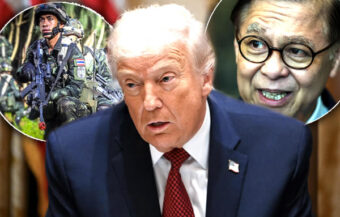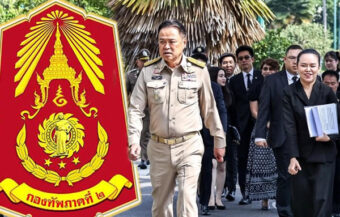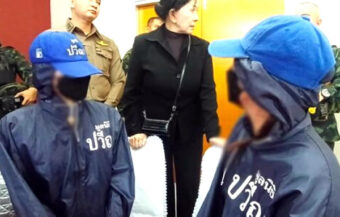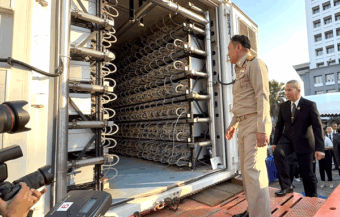Emergency cabinet backs game-changing US-Thai trade deal as 19% tariff rate lands. Exporters get soft loans, key industries gain protection, and investor confidence surges. Pact shields jobs, cuts red tape, and positions Thailand for global competitiveness.
After yesterday’s emergency cabinet briefing, the US-Thai tariff deal got the green light — now it’s heading to Parliament. The 19% tariff agreement, hammered out in tough talks between US trade reps and Finance Minister Pichai Chunhavajira’s team, has landed with a powerful impact. It’s a shot in the arm for Thailand’s economy, which is fighting to stay on track for GDP growth this year. The deal resets US-Thai business ties and zeroes in on protecting US companies that employ over 100,000 people in Thailand. This is more than a trade agreement — it’s a game changer.
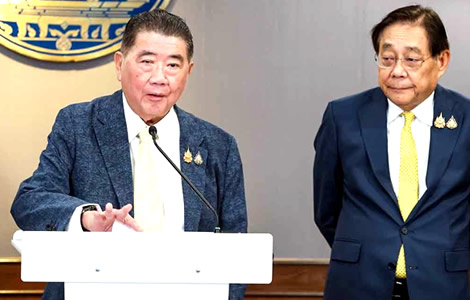
The Thai government acted swiftly on Friday in response to the United States’ new 19% import tariff on Thai goods. Prime Minister Srettha Thavisin’s cabinet held an emergency meeting to consider immediate trade measures and economic relief. Finance Minister Pichai Chunhavajira presented a detailed response plan.
This included trade proposals, border relief packages and industrial support policies. Importantly, the cabinet approved a framework to guide negotiations with the US. Although the deal is still in its early stages, it was well received by both political factions and industry leaders.
Proposal advances to talks on product scope, trade rules and transparency in next negotiation phase
To begin with, the proposal submitted to the US is non-binding. Nevertheless, it now advances to sector-specific negotiations. These talks will determine which Thai and US goods are covered, and under what conditions.
According to Pichai, the US will soon publish the full Thai proposal. This will, in turn, allow for further review and public transparency. Notably, the negotiation will focus on rules of origin and fair trade standards. The US intends to assess Thailand’s framework against those of other trading partners. Admittedly, this phase is only the first in a broader series of trade talks.
Meanwhile, Thai exporters are working against the clock. Products shipped before August 7 will be taxed at 10%. After that, the 19% rate takes full effect. In anticipation, Thai firms are accelerating exports to beat the deadline.
Consequently, Finance Minister Pichai announced that the government would provide soft loans to exporters. These loans will help clear production backlogs and support competitiveness upgrades. Specifically, two loan types are available: short-term capital for firms with stock on hand and longer-term financing for efficiency improvements.
Targeted aid and short-term loans will help Thai exporters beat August 7 tariff implementation deadline
In collaboration with the Federation of Thai Industries (FTI) and the Thai Chamber of Commerce, sector-specific strategies are now being developed. For example, manufacturers with delayed shipments can resume operations with added certainty. Additionally, industries that rely on imported raw materials will benefit from reduced delays and faster customs processing.
At the same time, the Thai government is preparing to lower import tariffs on certain US goods. However, this will occur only after parliamentary approval. Initially, tariff reductions will apply only to items already enjoying 0% rates under other trade agreements.
This ensures consistency and avoids competitive shocks to local producers. Some US imports will also face quantitative restrictions. For instance, if a product threatens a domestic industry, Thailand may set import quotas.
In a recent television interview, Pichai gave examples to illustrate this point. He noted that certain US goods, like cherries, do not compete with domestic products. Therefore, their import poses minimal economic risk.
Government signals openness on US imports but will use quotas to protect local industry when needed
Conversely, items such as corn—of which Thailand produces 10 million tons annually—require careful handling. Thai demand may soon reach 13 million tons. Since US corn is cheaper, safeguard measures are being considered.
Under the new framework, Thai feed producers may be required to buy the first 5 million tons from local farmers. Then, imports from neighbouring ASEAN countries would follow. Only after that would US corn be allowed. Thus, this phased approach would maintain balance and protect local agricultural jobs.
Furthermore, to combat environmental degradation, imported corn must meet sustainability standards. Specifically, the government will require certification that corn from neighbouring countries was not produced using open burning. After all, such burning is a key contributor to PM2.5 air pollution, particularly in northern Thailand.
Similarly, the import of pork will remain tightly controlled. Thailand already produces a surplus of pork. Hence, liberalising pork imports would hurt domestic farmers. Pichai confirmed there would be no immediate changes in this area.
Corn and pork imports are tightly controlled under new plan to protect farms and fight air pollution
Any future imports will be extremely limited—less than 1% of total consumption. Moreover, they will be subject to strict food safety and traceability rules. For example, internal organs, which are very cheap in the US, will not be allowed into the Thai market.
In addition, the US has asked Thailand to remove certain non-tariff barriers. These include complex customs procedures, lengthy documentation requirements, and overlapping regulatory standards. Rather than resisting, Thailand views this as an opportunity.
The government now plans to streamline processes and cut red tape. This will include one-stop services and full digitalisation of import paperwork. Consequently, importers will face fewer delays and lower costs. Over time, this will improve national competitiveness.
Equally important, Thailand will adopt strong anti-circumvention measures. Transshipped goods from China or other countries will face a 40% tariff. This mirrors Vietnam’s current policy. Goods must come with verified Certificates of Origin (COO). Customs and the Commerce Ministry will conduct joint inspections.
These inspections will confirm whether factories actually produce the goods they claim to export. In effect, this step will help block illegal transshipments and protect Thai industries.
Thailand commits to cutting red tape and cracking down on transshipment to strengthen competitiveness
In the energy sector, the agreement will lead to increased cooperation with the United States. Thailand currently imports 120,000 barrels of crude oil daily. Under the new deal, 10% more will come from the US.
More significantly, Thailand signed a new LNG agreement. It covers 1 million tons of liquefied natural gas annually, starting next year. US LNG is cheaper than other sources. Thus, the deal could help lower electricity prices for Thai consumers and businesses alike.
Additionally, the aviation industry will benefit. Thai Airways is planning to replace 100 ageing aircraft. Most have not been updated since before the COVID-19 pandemic. The proposed plan would involve the purchase of Boeing jets over the next five to ten years. As a result, this supports both national carrier renewal and the US aerospace sector.
Another major goal is preserving US investment in Thailand. American firms dominate Thailand’s electronics sector. They manufacture hard drives, servers, and other critical components. In fact, these firms generate around 30% of Thailand’s trade surplus with the United States.
Deal boosts oil and aviation ties while securing US electronics investment that fuels trade surplus
Crucially, they employ more than 100,000 highly skilled Thai workers. Pichai stressed that this workforce took decades to develop. It would be very hard to replicate in the US or elsewhere. Therefore, retaining these companies is a top priority. It protects jobs, prevents factory relocations and strengthens bilateral investment ties.
Pichai emphasised that this is not just a customs agreement. Rather, it represents a broad strategic partnership. The goal is to improve market access, facilitate trade and attract new investment.
More importantly, it gives Thailand a chance to reform its economy. Bureaucratic efficiency, digital infrastructure, and global integration are now central goals. These changes could position Thailand as a high-value manufacturing hub in the region.
The private sector has responded with enthusiasm. The Federation of Thai Industries praised the government for protecting business interests. President Kriangkrai Thienukul said the 19% rate keeps Thailand competitive.
It also encourages new foreign direct investment. He thanked “Team Thailand” for their strong leadership. Moreover, he emphasised that Thailand’s exports to the US—worth over 18% of total exports—are now secured.
New framework protects skilled jobs while helping Thailand move toward a high-value industrial future
Previously, concerns had grown that a 36% tariff could drive investors to other Southeast Asian countries. However, the 19% rate alleviates this risk. In fact, investors may now increase their stakes in Thailand. Confidence is returning. Industry leaders expect more foreign investment within the next six months.
Wisit Limluecha, Vice Chairman of the Thai Chamber of Commerce, echoed these views. He noted that the drop from 36% to 19% is a big win. It aligns Thailand with peer countries that produce similar goods. This alignment is critical for price competitiveness on the global stage.
Suphachai Chearavanont, CEO of Charoen Pokphand Group, also praised the government. He highlighted the importance of being treated as a “partner” by the United States.
This status reflects trust and equality. Suphachai said the deal “unlocks” lingering doubts among Thai firms. As a result, investment planning is now more predictable. He called the agreement a turning point in Thailand’s international trade strategy.
Investment leaders say deal boosts confidence and restores predictability for foreign and local firms
Moreover, he stated that confidence in the Thai economy is now stronger. Both domestic and foreign investors can plan with greater clarity. According to Suphachai, the agreement signals that Thailand is ready to compete globally. In his view, this success proves that fair negotiation is possible even with powerful trade partners.
In summary, the 19% tariff deal with the United States marks a significant economic and diplomatic milestone. It shields key Thai industries, accelerates needed reforms and creates space for new growth.
Win for Thailand. 19% U.S. tariff deal just announced. Rate lower and more competitive than predicted
Last minute tweaks in Bangkok as deal is finalised with U.S. However, Thailand may not match Vietnam
Finance Minister explains the Kingdom’s latest offer to US officials as Thailand pursues competitive tariff deal
The package addresses immediate business concerns while laying the foundation for long-term competitiveness. With US cooperation, Thai exporters now face fewer barriers and more certainty. Meanwhile, energy, aviation, and electronics industries are set to benefit. For the government, this represents not only damage control—but a strategic opportunity.
As talks continue, Parliament must still ratify the final terms. Regulatory updates and administrative changes will follow. Yet the broad direction is already clear. Thailand is modernising. It is defending its industries, supporting its workforce, and preparing for a more integrated future in global trade.
Join the Thai News forum, follow Thai Examiner on Facebook here
Receive all our stories as they come out on Telegram here
Follow Thai Examiner here
Further reading:
Last minute tweaks in Bangkok as deal is finalised with U.S. However, Thailand may not match Vietnam




